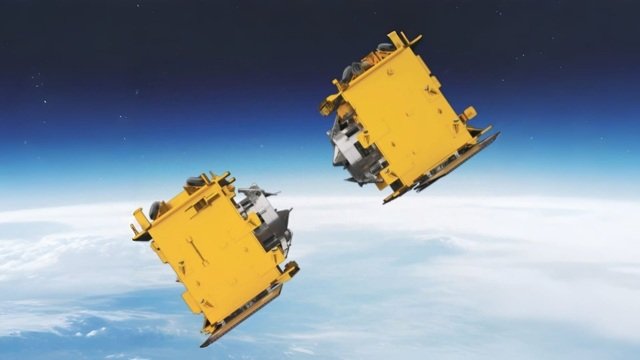The entire space community and ISRO have received congratulations from Prime Minister Shri Narendra Modi for the successful satellite docking exercise. It is an important first step for India’s aspirational space missions in the years to come, said Shri Modi.
On X, the prime minister wrote:
“Congratulations to the entire space community and our scientists at @isro for the successful satellite docking demonstration. It is an important first step toward India’s future aspirational space missions.
The successful completion of the docking operation for the Space Docking Experiment (SpaDeX) mission on January 16, 2025, was a historic milestone that allowed India to join the select group of countries that are able to carry out space docking operations. India’s achievement places it as the fourth
The docking procedure was carried out with remarkable accuracy. The spacecraft successfully captured the spacecraft after maneuvering smoothly from the 15-meter to 3-meter hold point and accurately starting the docking process. Following this, retraction went well, and rigidization was applied for stability. India’s technological prowess was demonstrated when the two satellites were successfully controlled as a single entity after docking. To further verify the system’s functionality, undocking procedures and power transfer inspections are planned over the upcoming days.
Launched by the 62nd PSLV flight, SpaDeX is an affordable technology demonstrator mission that aims to demonstrate in-space docking with two tiny spacecraft. India’s future space aspirations, such as lunar missions, sample returns, and the construction of the Bharatiya Antariksh Station (BAS), depend heavily on this project.
Two tiny satellites, SDX01 (the Chaser) and SDX02 (the Target), each weighing about 220 kg, are part of the SpaDeX mission. These spacecraft are androgynous, meaning that upon docking, either of them can take on the role of chaser (active spacecraft). They have a strong power management system, lithium-ion batteries, and solar panels. Sensors like magnetometers, star and sun sensors, and actuators like thrusters, reaction wheels, and magnetic torquers are all part of the Attitude and Orbit Control System (AOCS).
To illustrate the docking procedure in space, the satellites will perform a number of intricate maneuvers. The two satellites will function as a single spacecraft after docking. In order to verify that the docking was successful, electrical power will be exchanged between the two satellites. The spacecraft will separate and be utilized for application missions following a successful docking and undocking. The spacecraft will split up to start independent payload activities during undocking. High-resolution photographs, vegetation studies, natural resource monitoring, and on-orbit radiation environment data are all provided by these payloads, which have a wide range of uses.
India’s space capabilities have advanced significantly with the SpaDeX project, setting ISRO up for future space missions that are more ambitious and difficult. Union Minister of State for Science and Technology Dr. Jitendra Singh emphasized the importance of this achievement, saying that SpaDeX positions India as a world leader in space docking technology. He also emphasized a noteworthy partnership between ISRO and the Department of Biotechnology to investigate the use of biology in space. The importance of the native “Bharatiya Docking System” utilized for the docking experiment was further underlined by Shri Singh, who also stressed that this milestone opens the door for the successful completion of ambitious future missions like Chandrayaan 4, Gaganyaan, and the Bharatiya Antriksha Station.
For future space missions like lunar exploration and space station operations, space docking is an essential precondition. ISRO is establishing the groundwork for autonomous docking, a crucial capability for upcoming missions such as Chandrayaan-4, by successfully completing this mission. Furthermore, the SpaDeX mission will be crucial to advancing India’s aspirational space objectives, including the establishment of the Bharat Antariksh Space Station, the Gaganyaan mission, and the dispatch of an Indian astronaut to the Moon.
In addition to showcasing India’s advancements in the space industry, this technological innovation creates new avenues for increasingly challenging missions, solidifying India’s standing as a major participant in the international space community. SpaDeX demonstrates India’s progress in domestic innovation and strengthens its stance on


